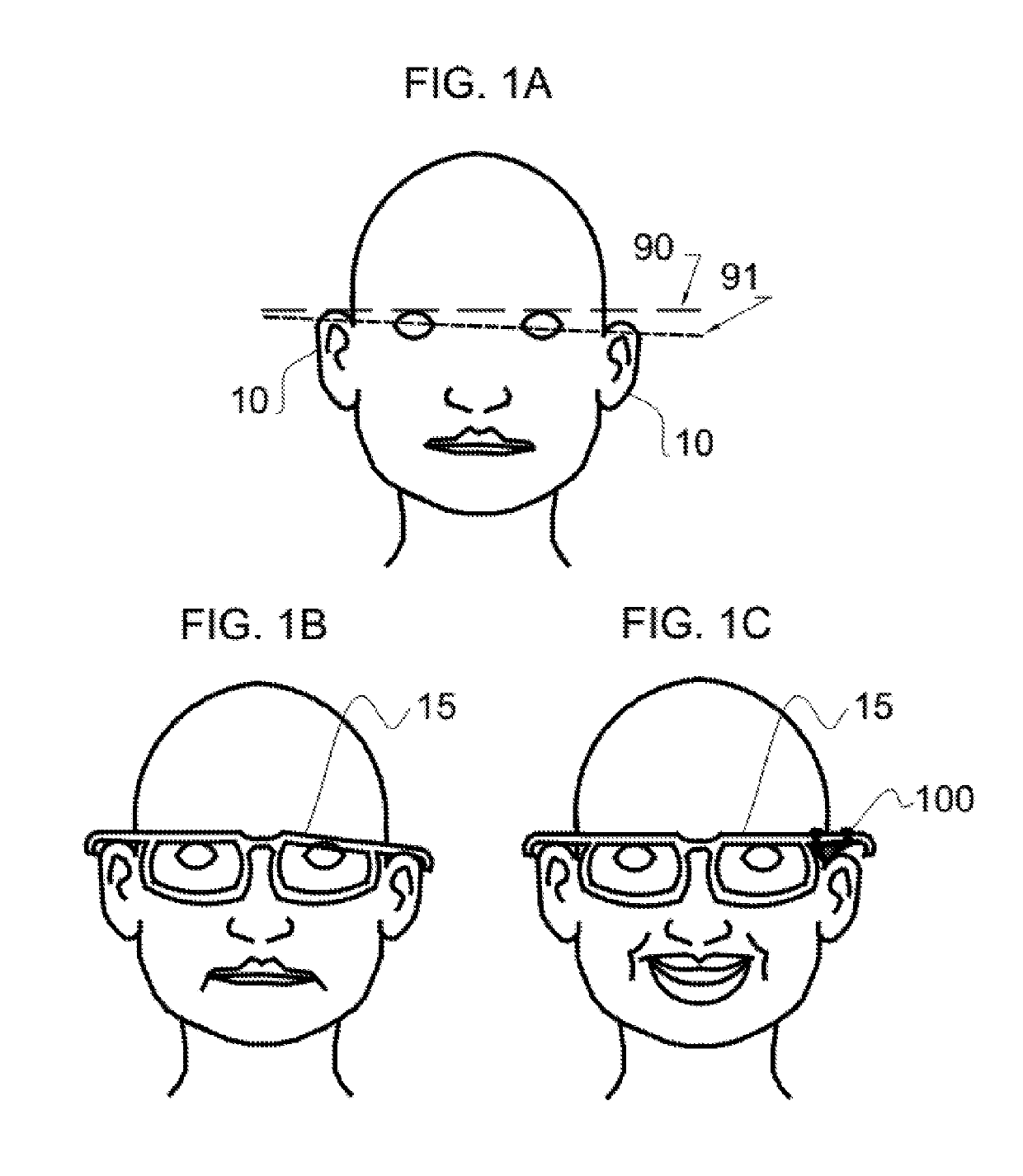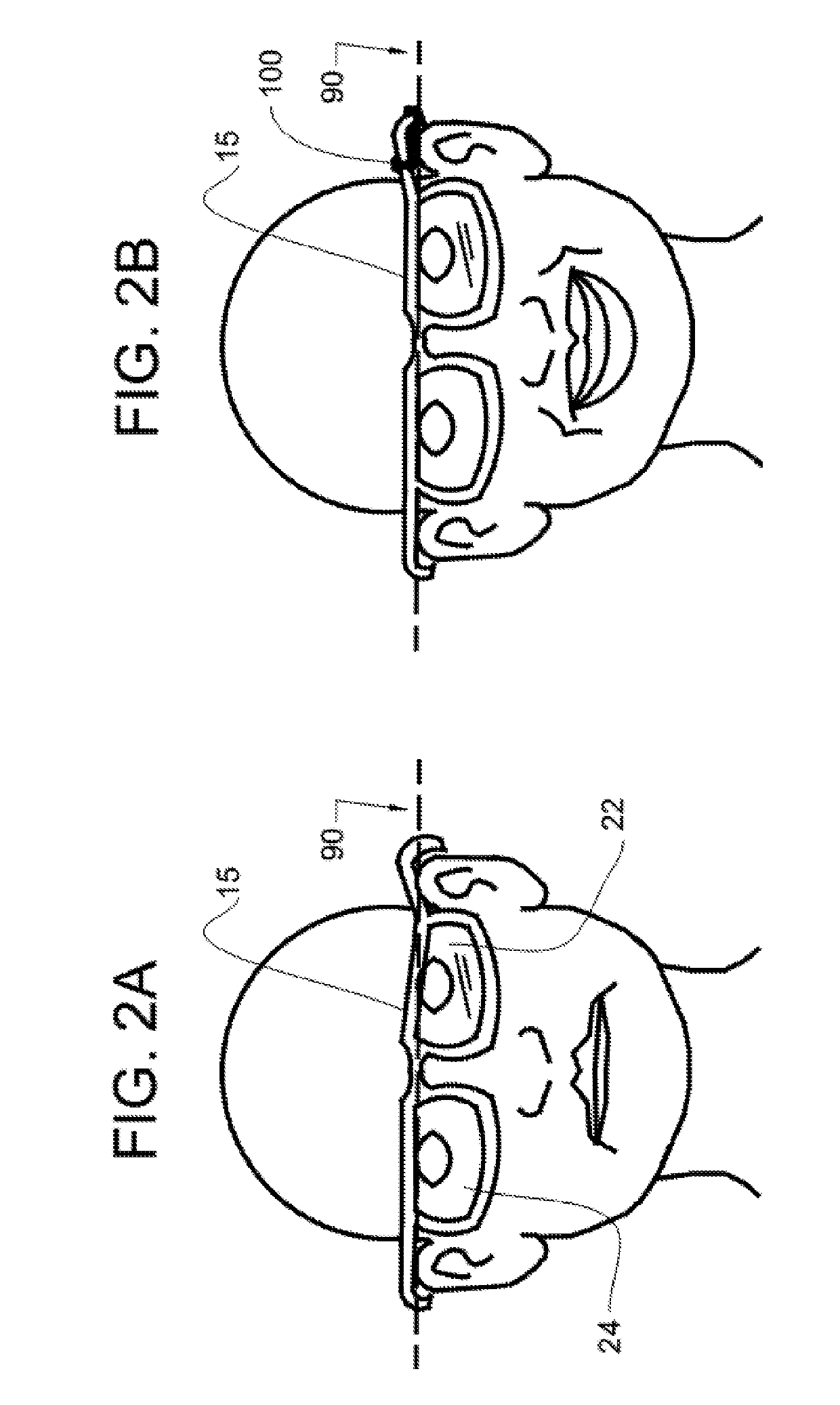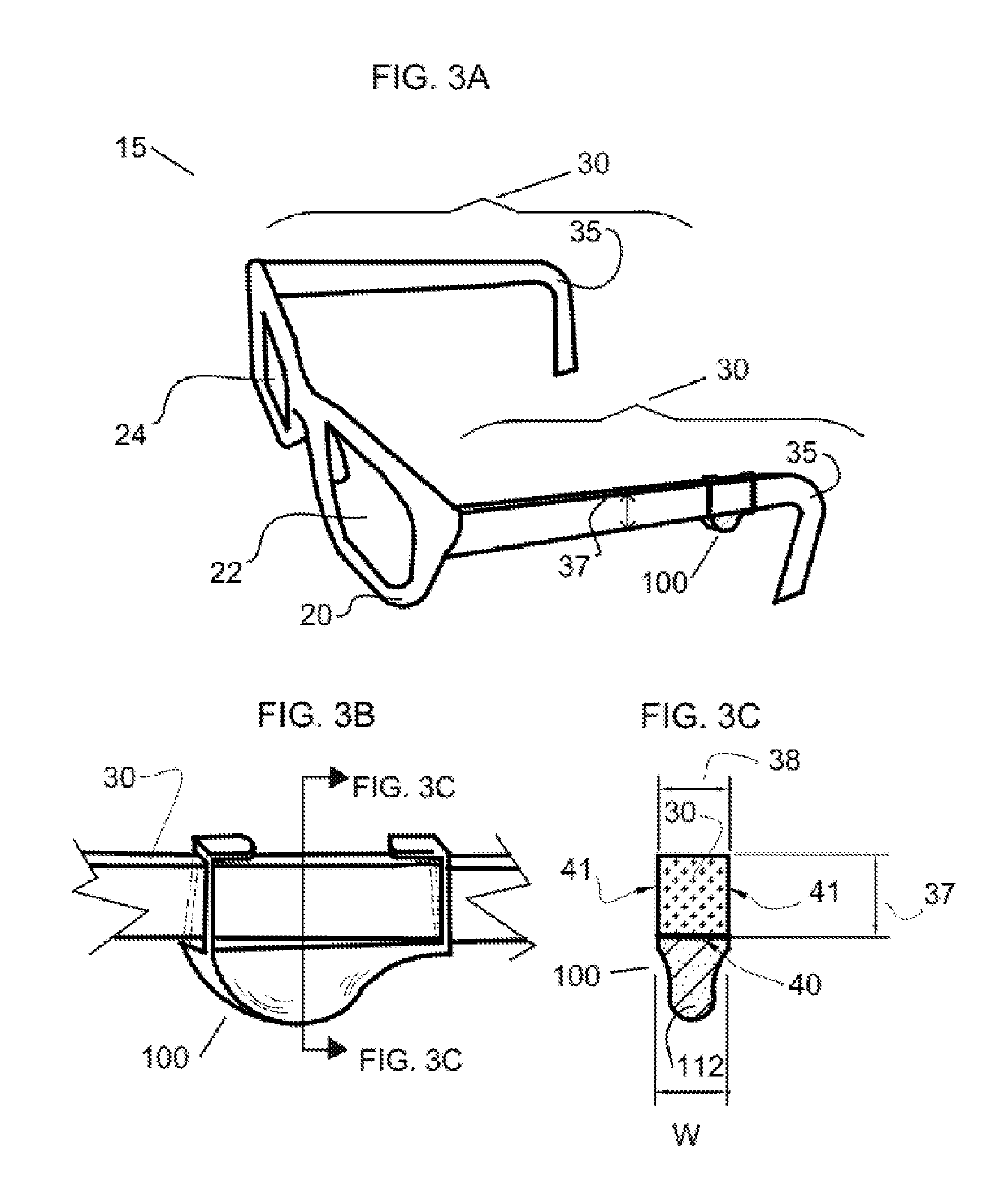Attachment for Straightening Eyeglasses and for Holding Devices or Fashionwear
- Summary
- Abstract
- Description
- Claims
- Application Information
AI Technical Summary
Benefits of technology
Problems solved by technology
Method used
Image
Examples
first invention embodiment
[0184]This embodiment of the invention, as depicted by FIG. 8A, refers to a “nominal” position for the invention. The elastic middle segment 112 of the invention (e.g., embodiment 100) can have a variation in thickness and geometry along its longitudinal axis length. Depending on what part of the elastic middle segment 112 rests on the ear bridge 11, varying degrees of lift, or eyeglass temple arm thickness extension, are possible. The eyeglass wearer can easily place any thickness of the elastic middle segment 112 between the eyeglass temple arm 30 and their ear bridge 11, by simply moving both elastic end segments 110 and 111 of the invention (e.g., embodiment 100 in FIG. 8A) slightly forward or backward along the eyeglass temple arm 30. In this way, very fine adjustments to the eyeglass temple arm thickness extension can be easily achieved. The eyeglass temple arm thickness extension is depicted by distance 210 in FIG. 8A, which is the thickness of the elastic middle segment 112 ...
second invention embodiment
[0187]A “stretch” position of the invention is depicted in FIG. 8B with invention embodiment 100. By this invention embodiment, the first elastic end segment 110 and second elastic end segment 111 of the invention are moved farther apart along the eyeglass temple arm 30, so that the elastic middle segment 112 of invention embodiment 100 stretches and lifts, adjustably displacing away from the eyeglass temple arm 30, and forming a “chord” shape across the two points on the eyeglass temple arm defined by where the two ends of the invention are gripping the eyeglass temple arm. The stretch position is particularly useful on an eyeglass temple arm in which the eyeglass temple arm 30 has a curved section (i.e., temple curve, or “ear hook”35). In this “stretch” position as shown in FIG. 8B, the eyeglass temple arm 30 is lifted off of the wearer's ear bridge 11 by the thickness extension consisting of the thickness of elastic middle segment 112 of the invention (e.g., dimension 210 of embo...
third invention embodiment
[0189]A “bulge” position of the invention is shown in FIG. 8C with invention embodiment 100. By this invention embodiment, the elastic end segments 110 and 111 of the invention are moved closer together along the eyeglass temple arm, so that the elastic middle segment 112 of the invention adjustably displaces away from the eyeglass temple arm 30 forming a “bulge” shape that rests on the wearer's ear bridge 11. In this “bulge” position as shown in FIG. 8C, the eyeglass temple arm 30 is lifted from the ear bridge 11 by the thickness extension consisting of the thickness of elastic middle segment 112 of the invention (e.g., dimension 210 of embodiment 100 in FIG. 8A) plus the gap between elastic middle segment 112 and the eyeglass temple arm 30 caused by the bulging of elastic middle segment 112. This “bulge” position thus provides greater height adjustment (depicted by distance 230 in FIG. 8C) than does the nominal position (depicted by distance 210 in FIG. 8A.)
[0190]This “bulge” posi...
PUM
 Login to View More
Login to View More Abstract
Description
Claims
Application Information
 Login to View More
Login to View More - R&D
- Intellectual Property
- Life Sciences
- Materials
- Tech Scout
- Unparalleled Data Quality
- Higher Quality Content
- 60% Fewer Hallucinations
Browse by: Latest US Patents, China's latest patents, Technical Efficacy Thesaurus, Application Domain, Technology Topic, Popular Technical Reports.
© 2025 PatSnap. All rights reserved.Legal|Privacy policy|Modern Slavery Act Transparency Statement|Sitemap|About US| Contact US: help@patsnap.com



